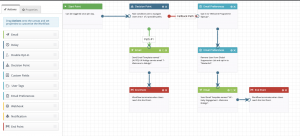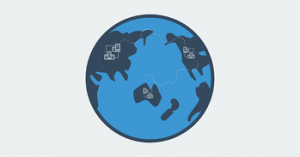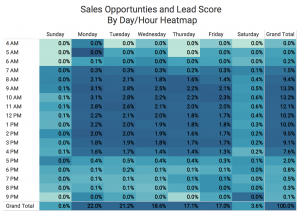
Climbing the ranks in the search engines isn’t as straightforward as it used to be. Nowadays there is endless amounts of information out there on how to best optimise your site, and keeping up with it—especially Google’s algorithm updates—can be the difference between being placed in the number one spot, or losing ground in the SERPs and struggling to gain it back.
With a whopping 70% of the global search engine market share, any update or tweak Google make in their algorithm could have a significant impact on the level of traffic to your website. But not without good reason; since the year 2000 Google have been on a mission to provide their users with the most relevant, high-quality search results, challenging the efforts of even the most experienced SEO specialists in the process. The most recent disruption has come from Google’s ’Mobilegeddon’, ‘Penguin’, and ‘Panda’ updates.
Here is a brief run down of each of them:
Mobilegeddon
This was a recent, pre-announced update in Google’s algorithm which favours mobile-friendly websites, both in desktop and mobile search results. Many websites have been reported to have suffered a blow to their rankings as a result of this update.
Penguin
The mighty penguin is an update that penalises websites thought to be deliberately spamming the search results, particularly those with paid or otherwise untrustworthy back links—a sign of trying to cheat your way up the rankings. The update hit more than 1 in 10 search results and wiped some sites completely off the map.
Panda
Another search filter update, but this time targeting sites with low-quality content. Practices such as keyword stuffing, article spinning, and duplicate content, were all recognised as punishable tactics. As a result of Panda, some sites have suffered up to a 79% decrease in organic visibility.
So how exactly do you know if you have been affected by one of these updates? You could pay an SEO expert or ‘penalty recovery specialist’ to find out for you, or you could follow our quick guide to identifying and safeguarding against potential Google setbacks.
Firstly, it is important to distinguish between the two types of Google penalties: Manual, and Algorithmic.
- Manual: Check your Google Webmaster Tools account for new notifications to see if you were penalised by a manual penalty. The message will include all the details you need to take action.
- Algorithmic Penalty: This one is a little more difficult to decipher. If you know when the changes in your rankings occurred, you can check the time period against Google’s Algorithm Change History to find any correlations.
Why Google May Have Penalised Your Site
There are four main areas Google analyses when crawling your site and deciding whether or not you deserve a penalty. These areas are: Linking, Content, Usability, and Indexing. We will look at the practices in each area that fall high on Google’s penalty radar.
Linking: Paid, Rented, or Otherwise Unnatural Links
Dodgy linking can take many forms, and it is best practice to stray away from anything that could be deemed as suspicious by Google. Aside from the obvious, this includes avoiding excessive reciprocal linking with clients, removing any broken outbound links, and no-following or removing site wide links such as the web developer credit in the footer.
Content: Poor-quality, Over-optimised Content
Quality content is the essence of any good website, and Google has recognised this by penalising low quality and over-optimised content published with the sole intention of improving rankings. That’s why it is crucial to ensure you are creating content for your readers first, and the search engines second. It goes without saying that duplicate content, keyword-stuffing, hidden content, black hat SEO advice, and article spinning are all red flags to Google.
Usability: A Seamless, Efficient, and Mobile User Experience
Google is becoming more and more able to assess pages like a human. If Googlebot encounters many pages which return 404 status, or worse still gives up because the load speed is too slow, this will be interpreted as a bad user experience. And with the recent Mobilegedden update, Google expects you to have either a separate mobile site or to have made the desktop version mobile-friendly. Test your website’s load time, make sure internal pages return the correct status, and don’t allow obsolete 404 pages to be indexed by Google.
In the SEO world there are no longer any quick fixes, and this is due to an ever-growing demand by users for relevant, high-quality, and trustworthy results. Through keeping up to date with Google algorithm changes, and ensuring your website provides value for the modern-day user, you are sure to be looked kindly on by the search engines.
Image CC by Ronnie Macdonald
(187)
Report Post







